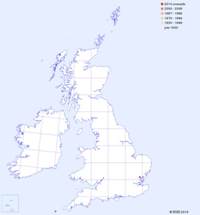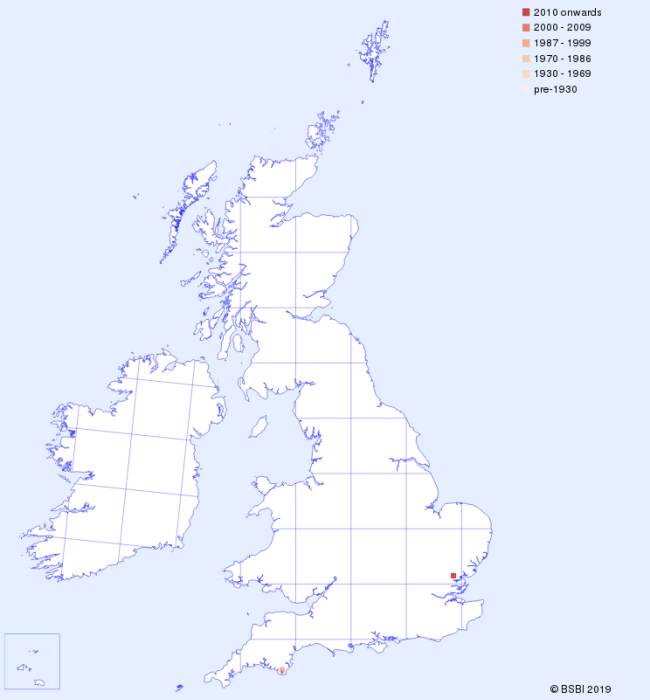Two species of the Serapias genus have been recorded from Britain, but nobody is sure if this is due to 'nature' and the result of windblown seed from mainland Europe or the result of deliberate introduction. Predominantly a Mediterranean species, Serapias lingua has been found in two sites in Britain, in Guernsey and in Devon. In Devon the plants were identified as the subspecies duriaei which, in the Mediterranean, is a clump-forming species that can appear in vast numbers along roadside verges and in other scrubby habitats, particularly in the Algarve region of Portugal. In France there is a very similar species called Serapias gregaria, the specific name of which relates to its gregarious nature. The plants in Guernsey are recorded as Serapias lingua subsp. lingua. The flowering period for these orchids in Britain is May and June, but they appear much earlier in the Mediterranean.
| Distribution Map | Key Features | |
 |
Records for the Tongue Orchid from BSBI are shown on the map with most recent in front. (Hover the mouse over the small map to expand it.) |
Plant (subsp. lingua): up to 50cm in height; stem green marked with red. |
Image Gallery for Tongue Orchid Serapias lingua
| Pollination | Taxonomy & Hybrids |
The flowers are pollinated by a variety of small bees. Vegetative reproduction appears to be important and may account for the large clusters of plants. |
The specific name lingua means 'tongue'. |
Articles about Tongue Orchid in JHOS
